Abstract
Serological surveillance of measles immunity has been carried out in England since 1986/7. Results from sera collected in 1989-91 revealed that the proportion of school age children who were susceptible to measles was increasing, following the introduction of the measles, mumps and rubella vaccination programme in October 1988. Mathematical models are used to interpret these data and determine whether this increasing susceptibility is sufficient to allow a resurgence of disease from the low levels achieved by 1993. The models summarize serological profiles by a single parameter, the reproduction number R, which quantifies the level of herd immunity in the population. Results showed that there was cause for concern over the levels of susceptibility to measles, with an epidemic of over 100,000 cases likely in 1995/6. These predictions are consistent with trends in the incidence and age distribution of measles and have enabled the planning of a major vaccination campaign.
Full text
PDF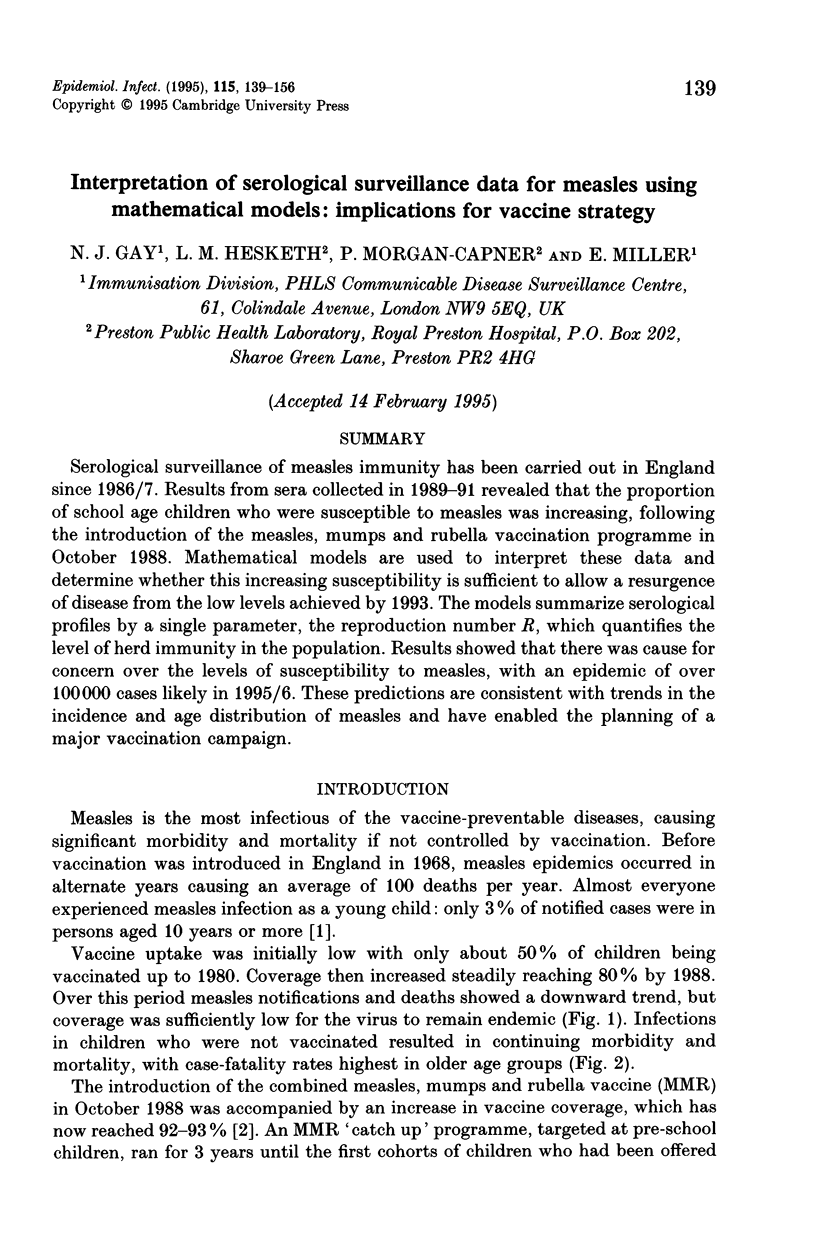
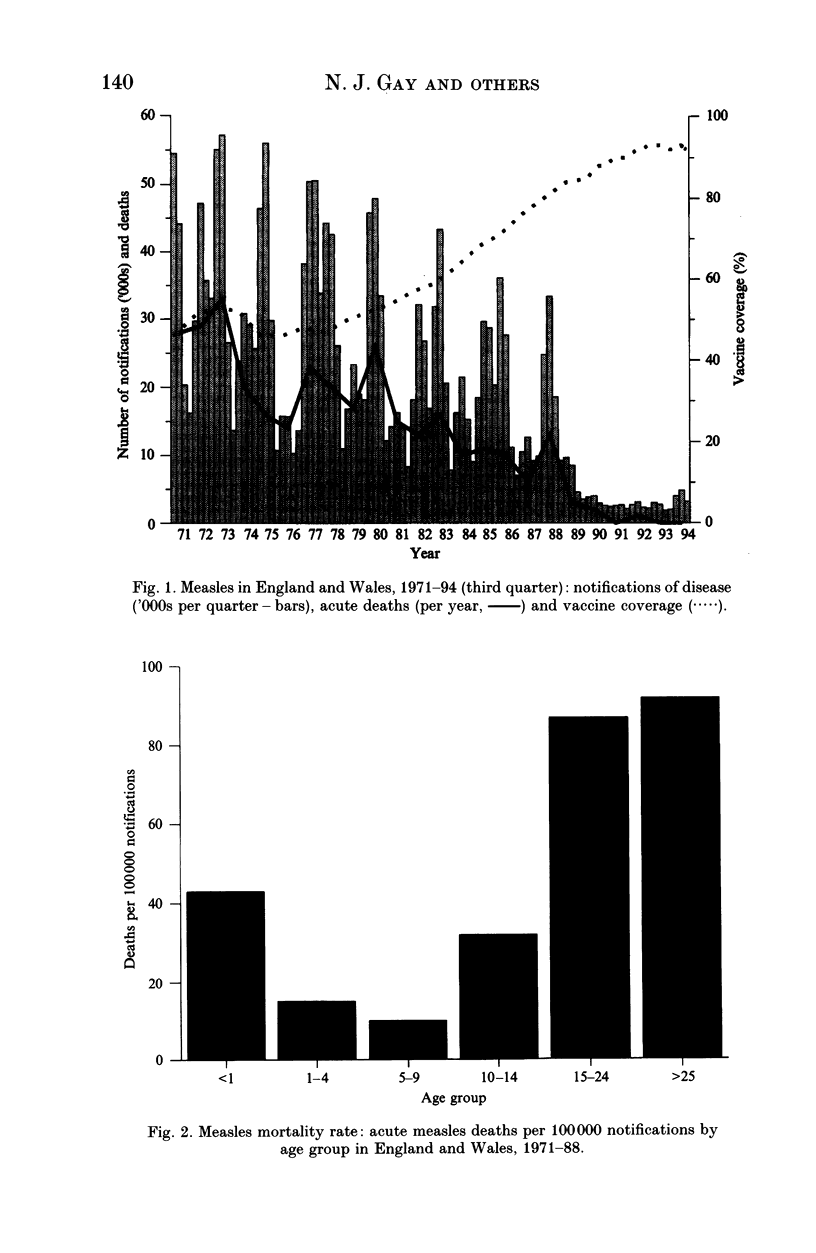
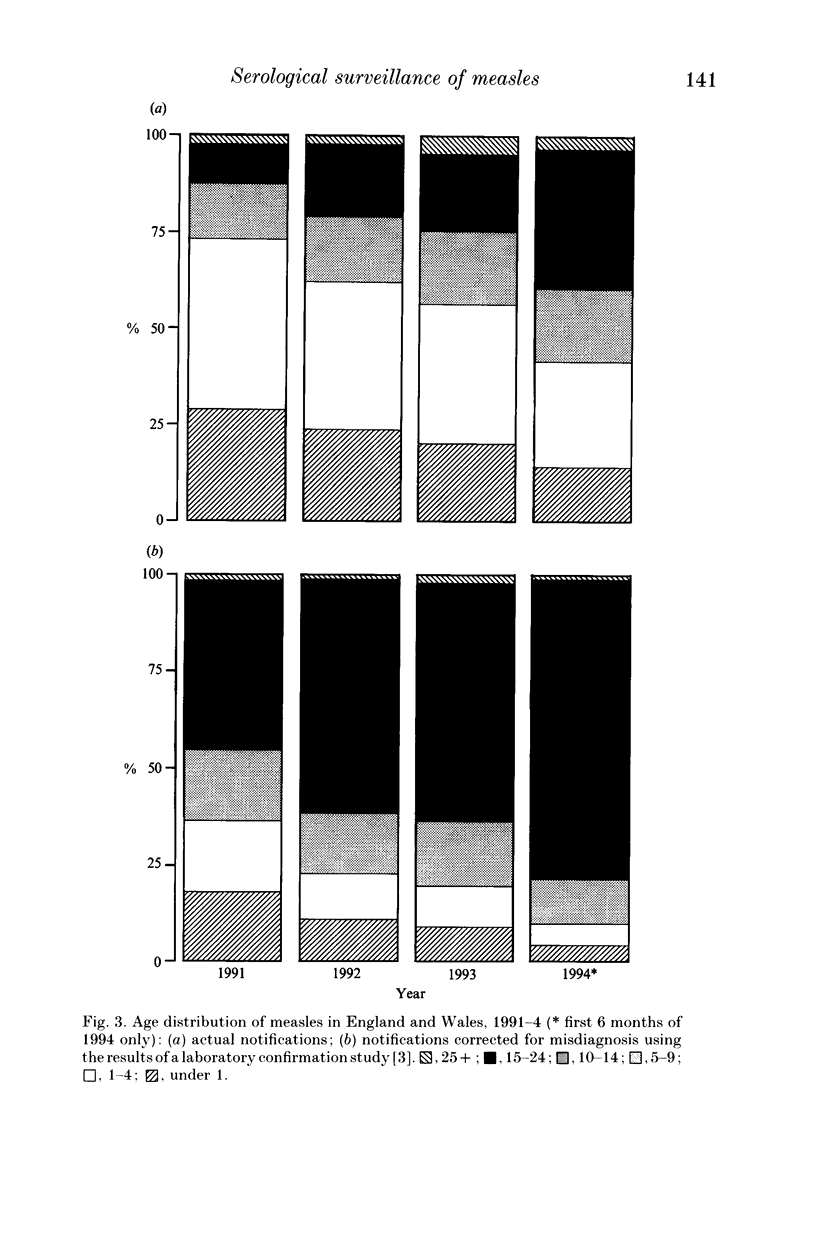
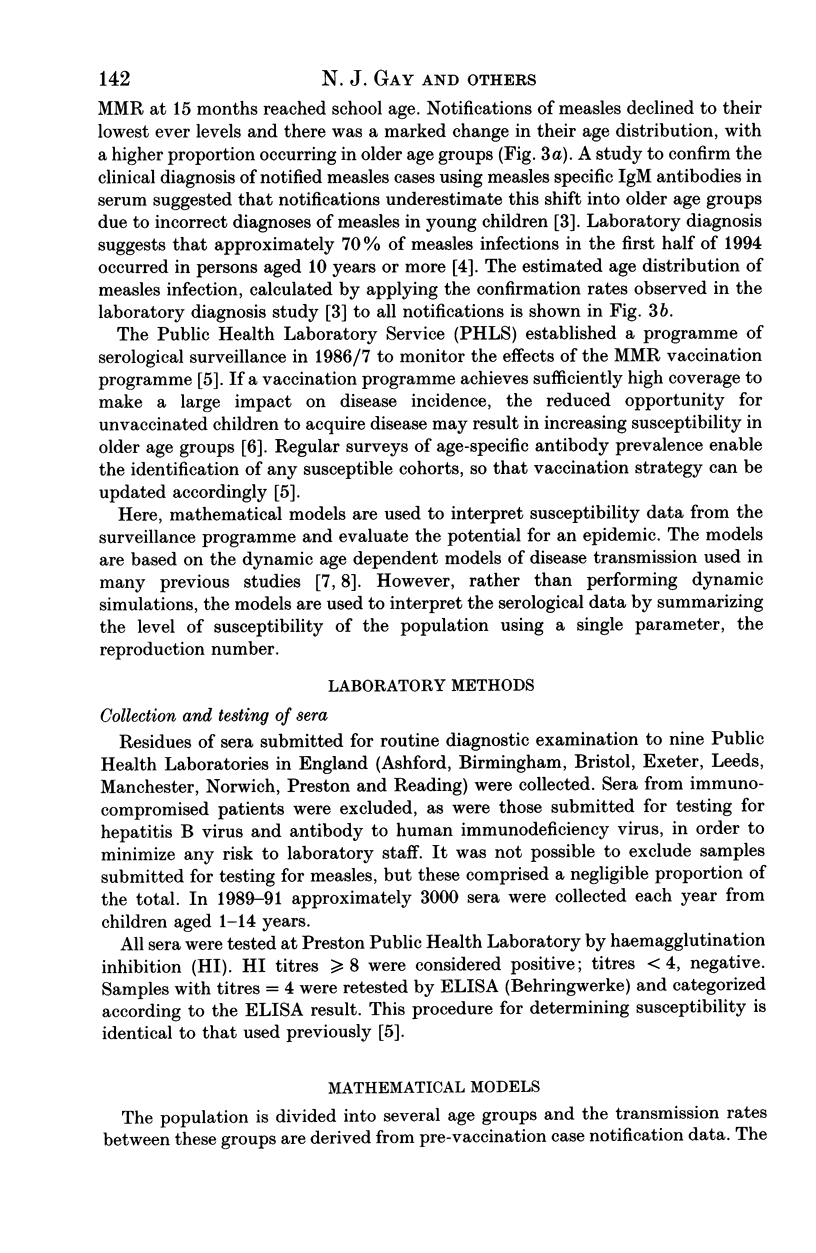
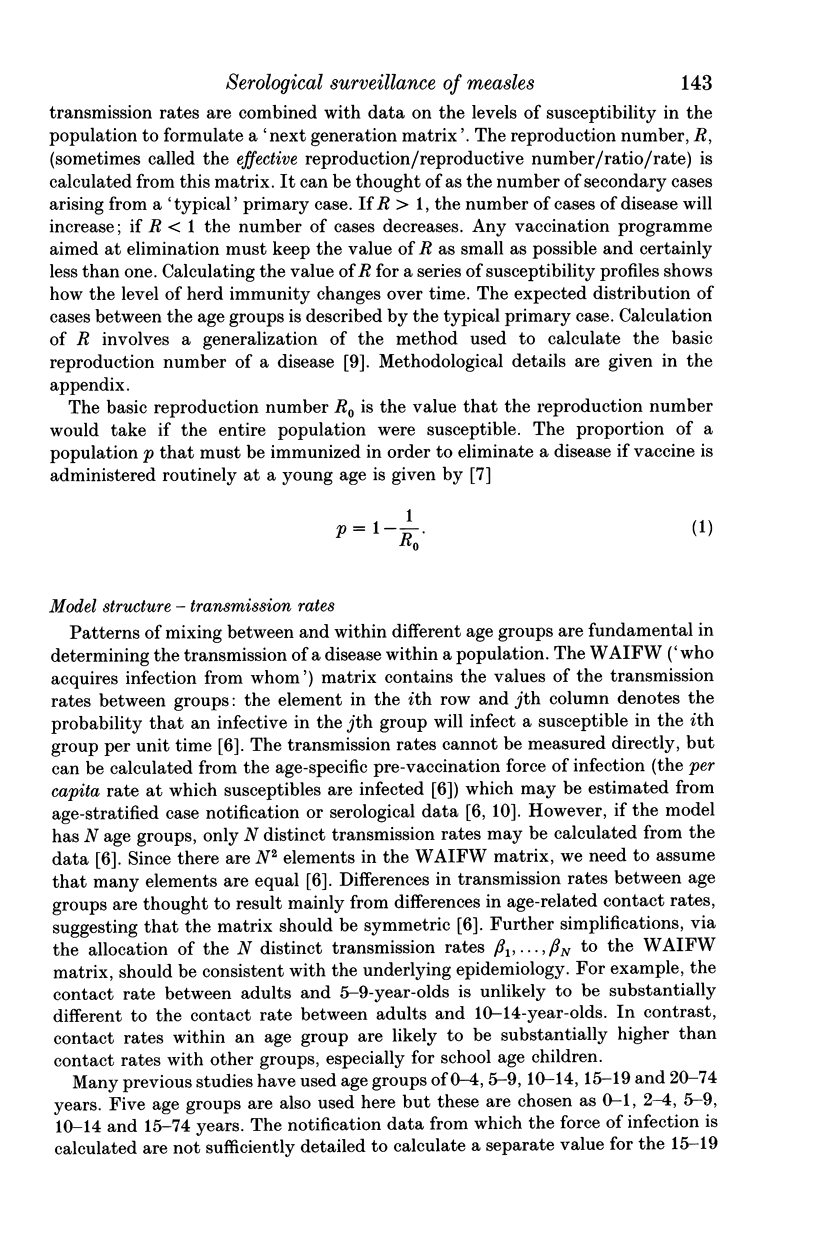
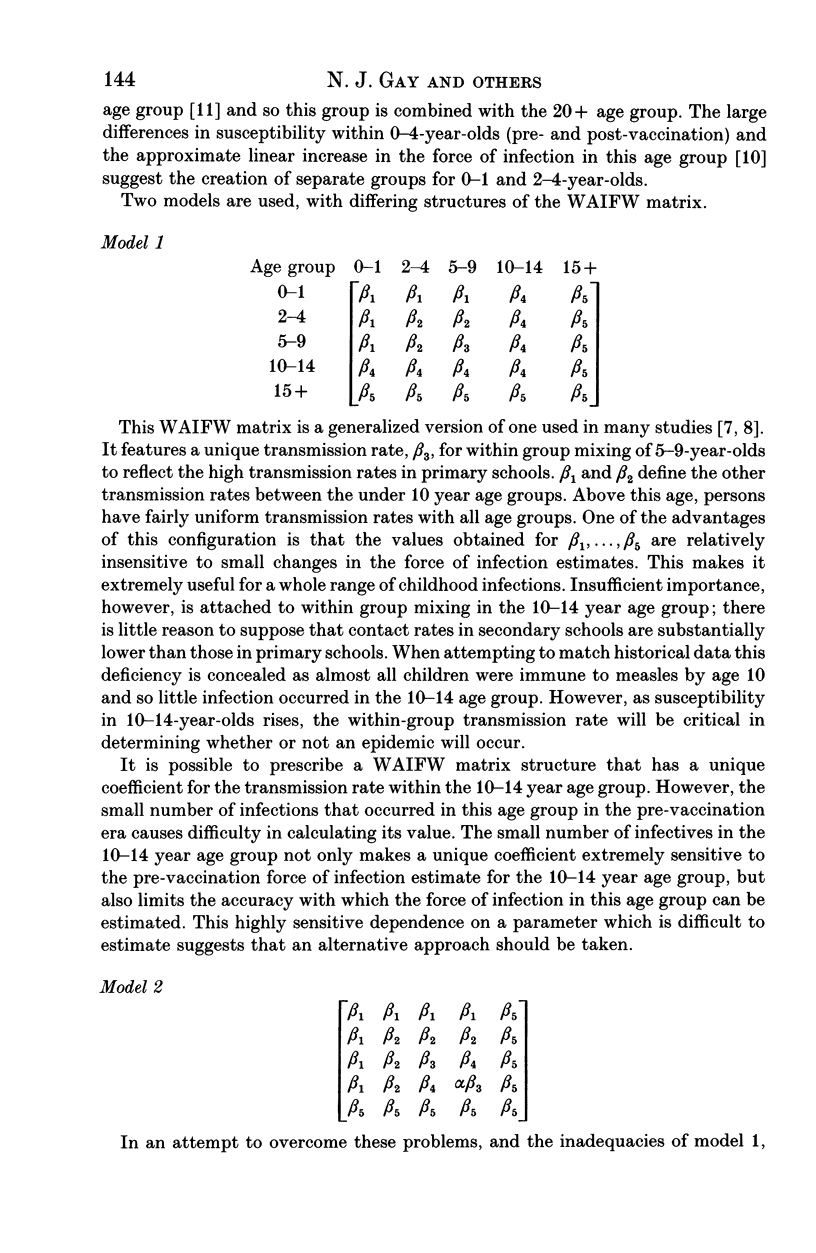
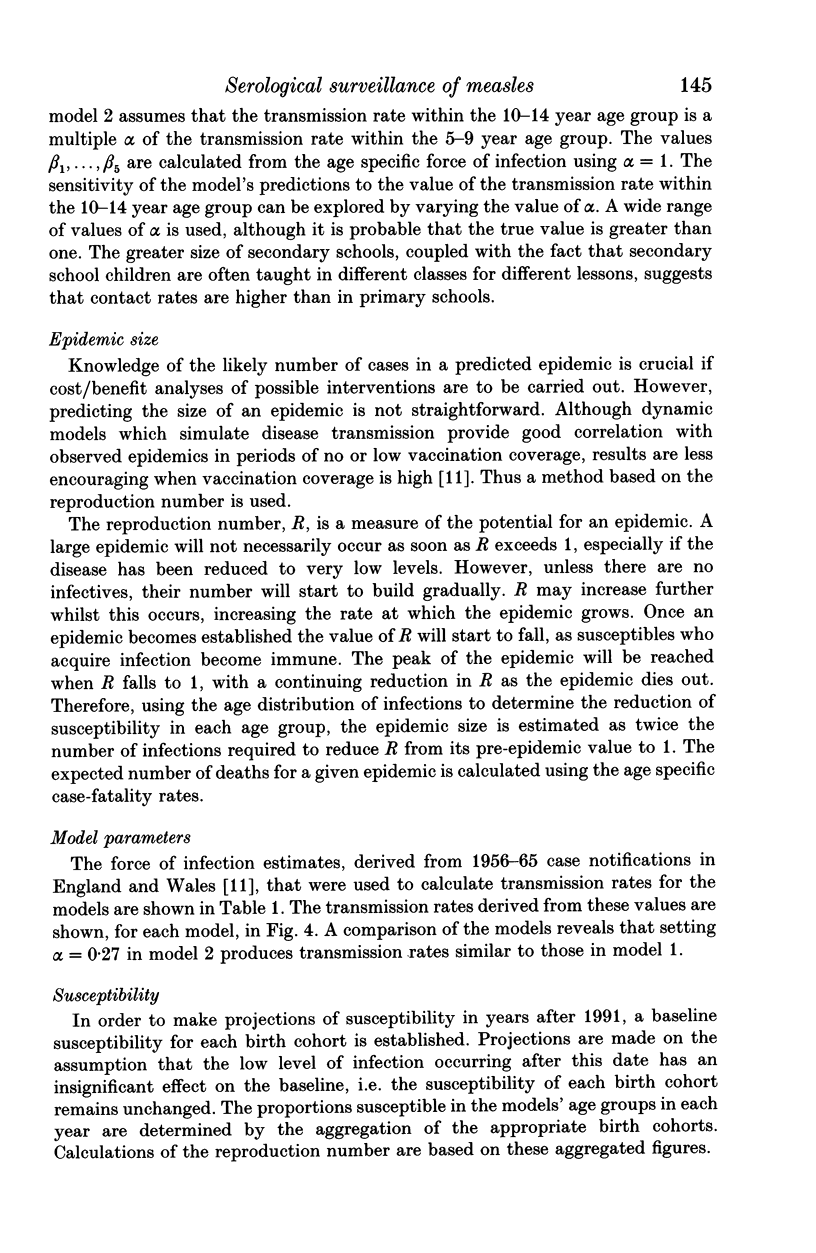
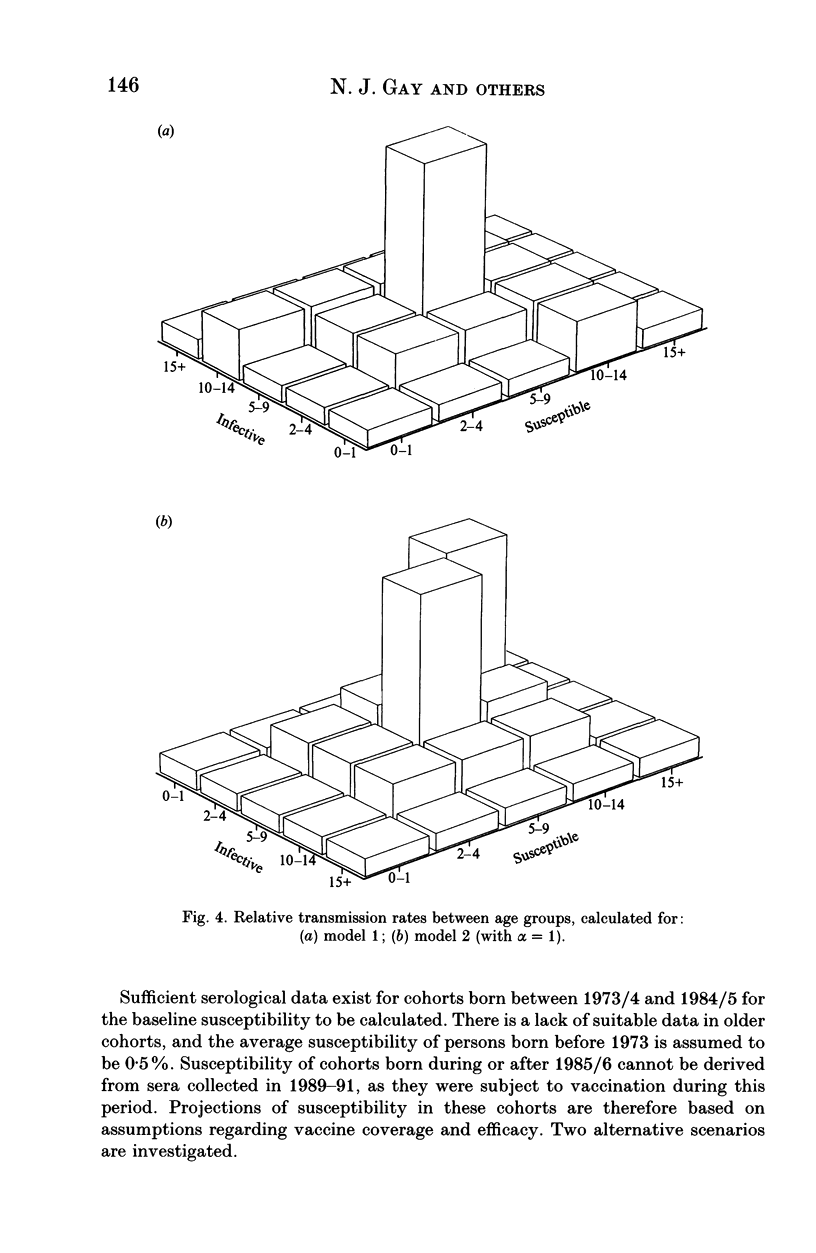
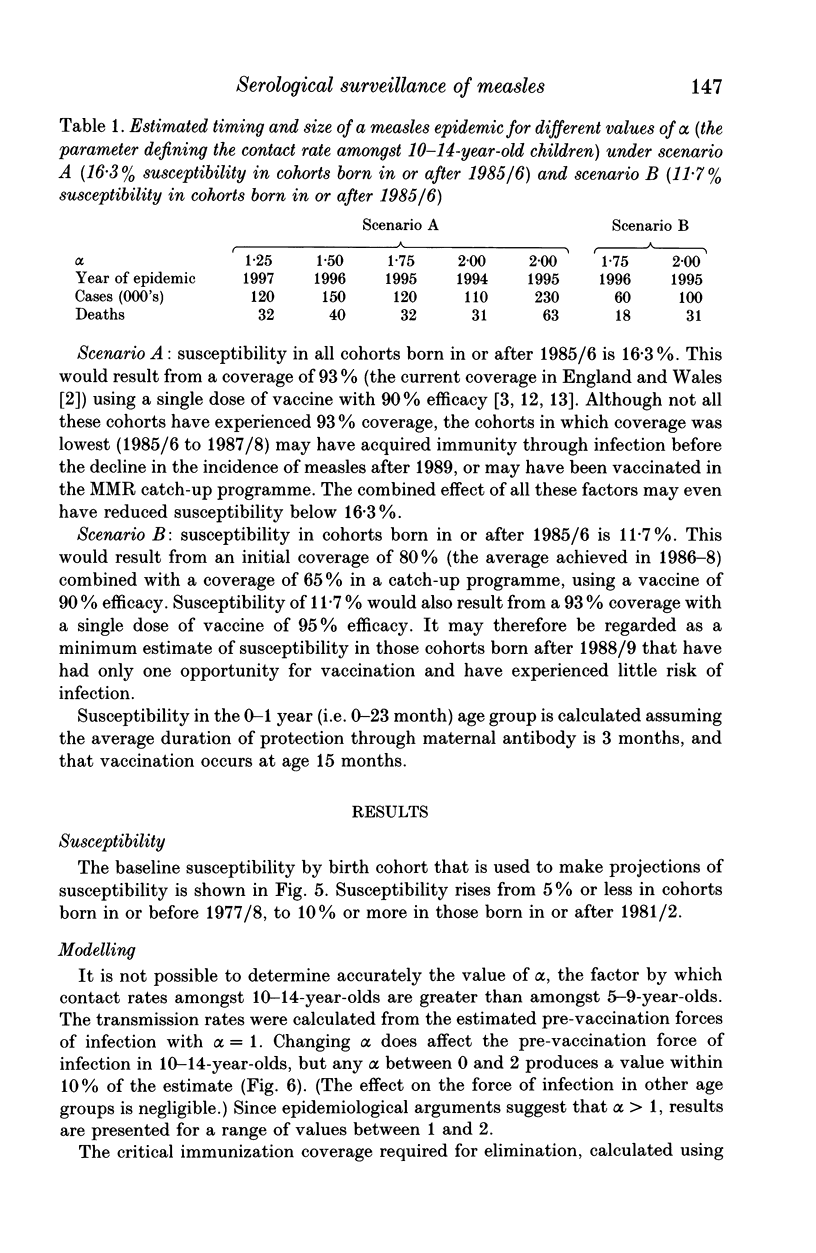
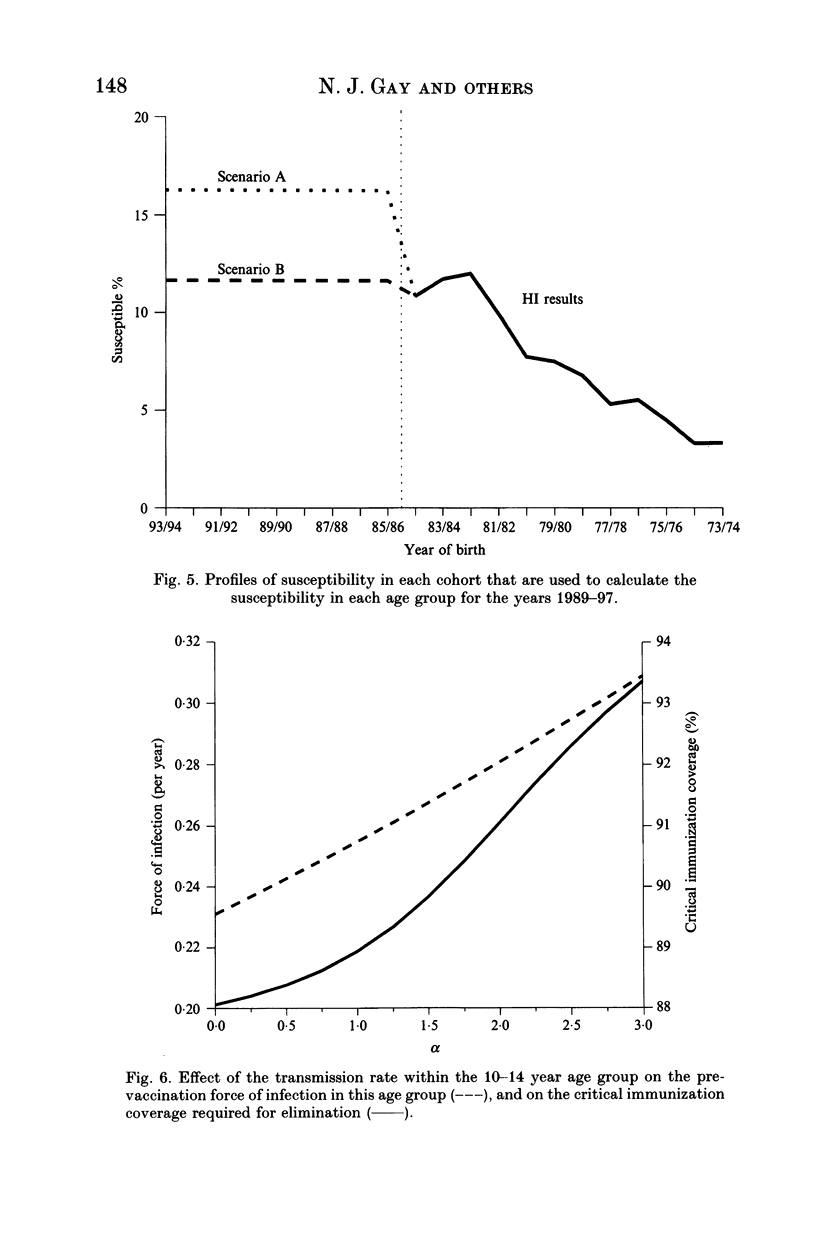
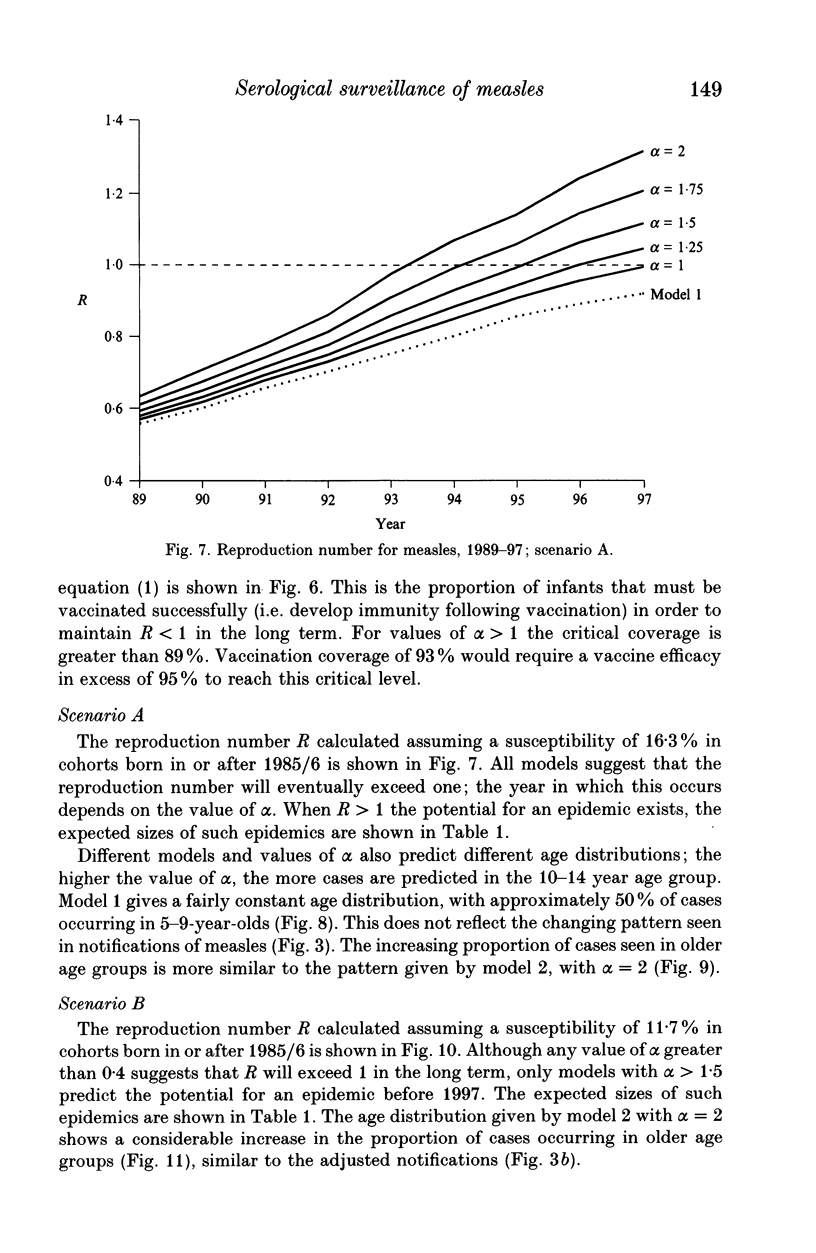
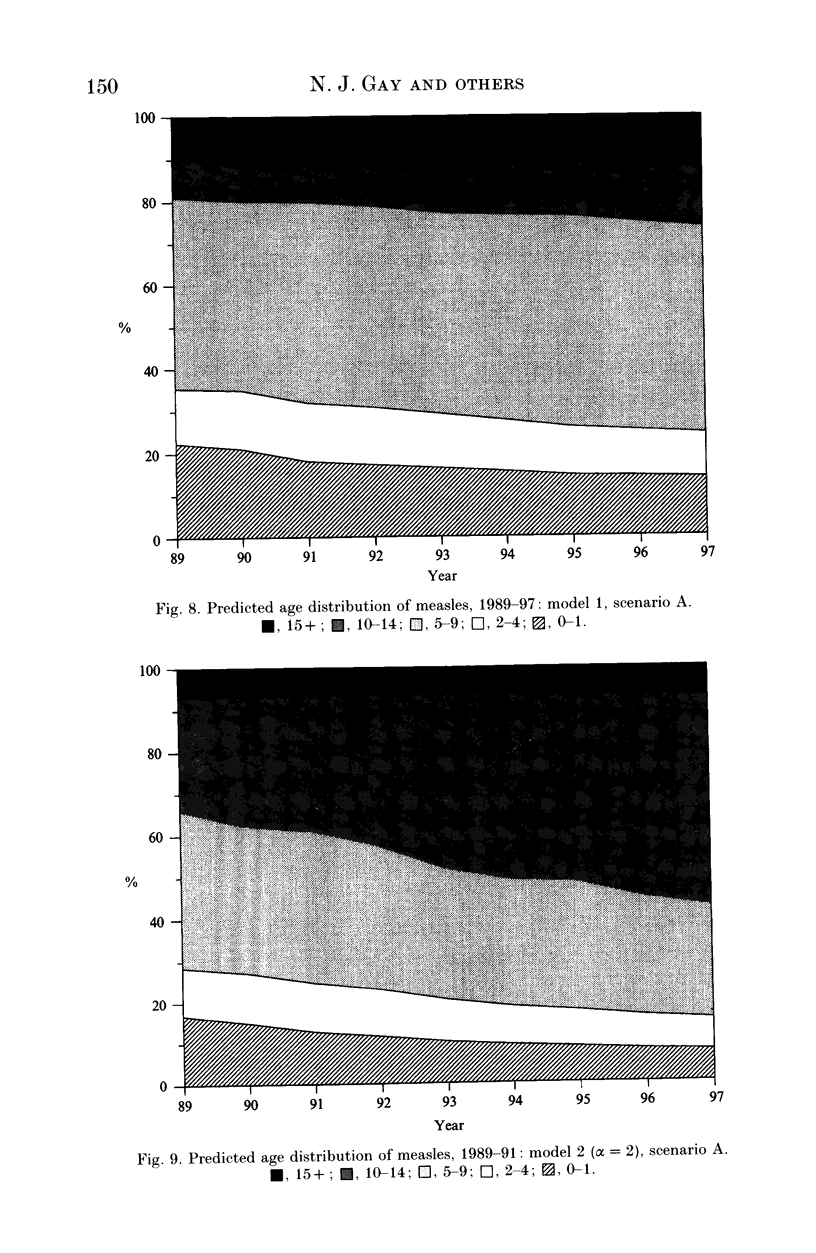
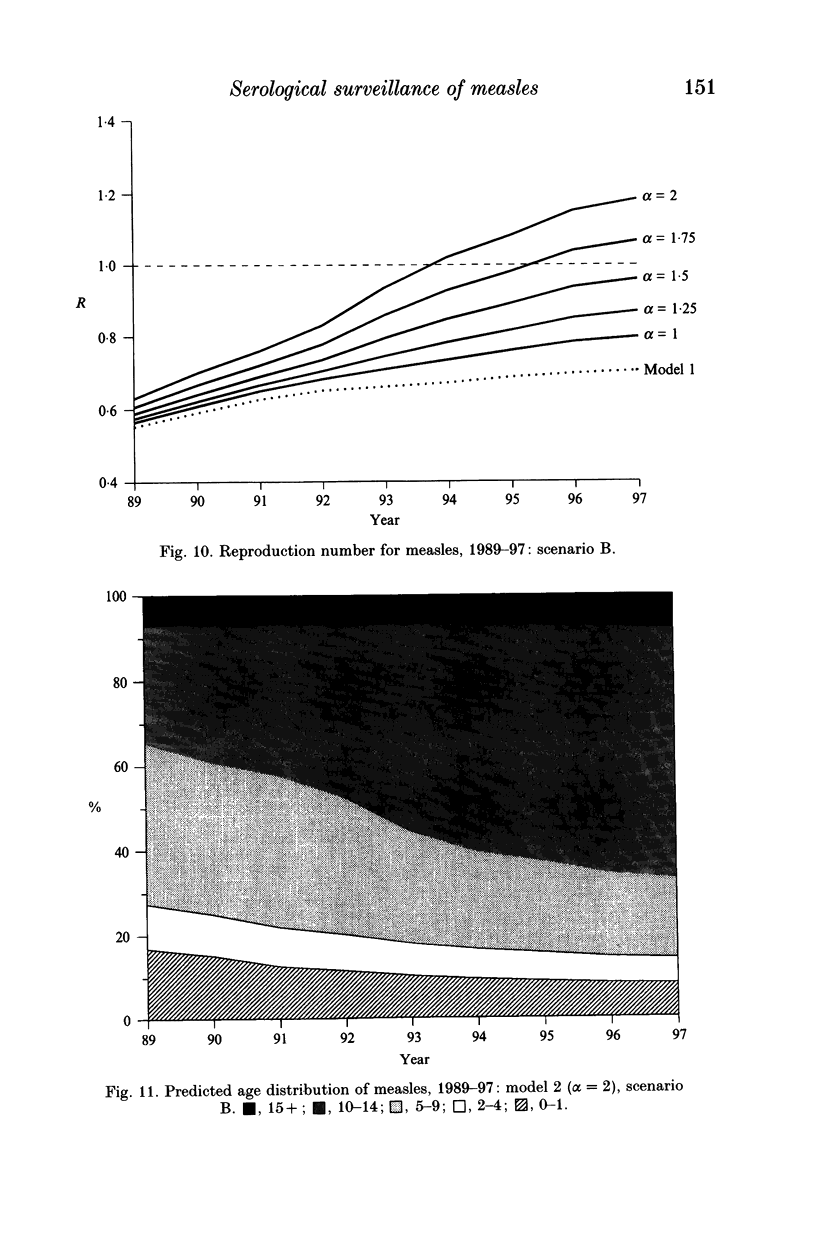
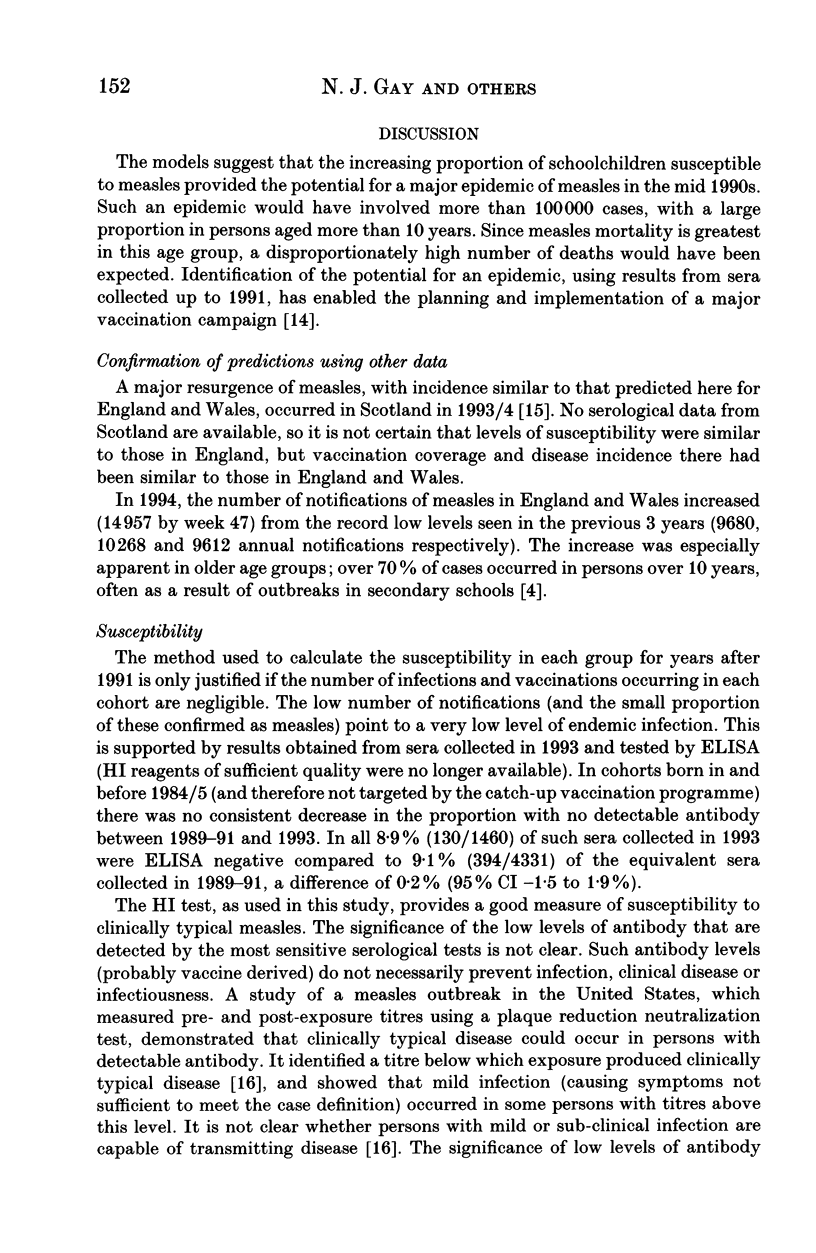
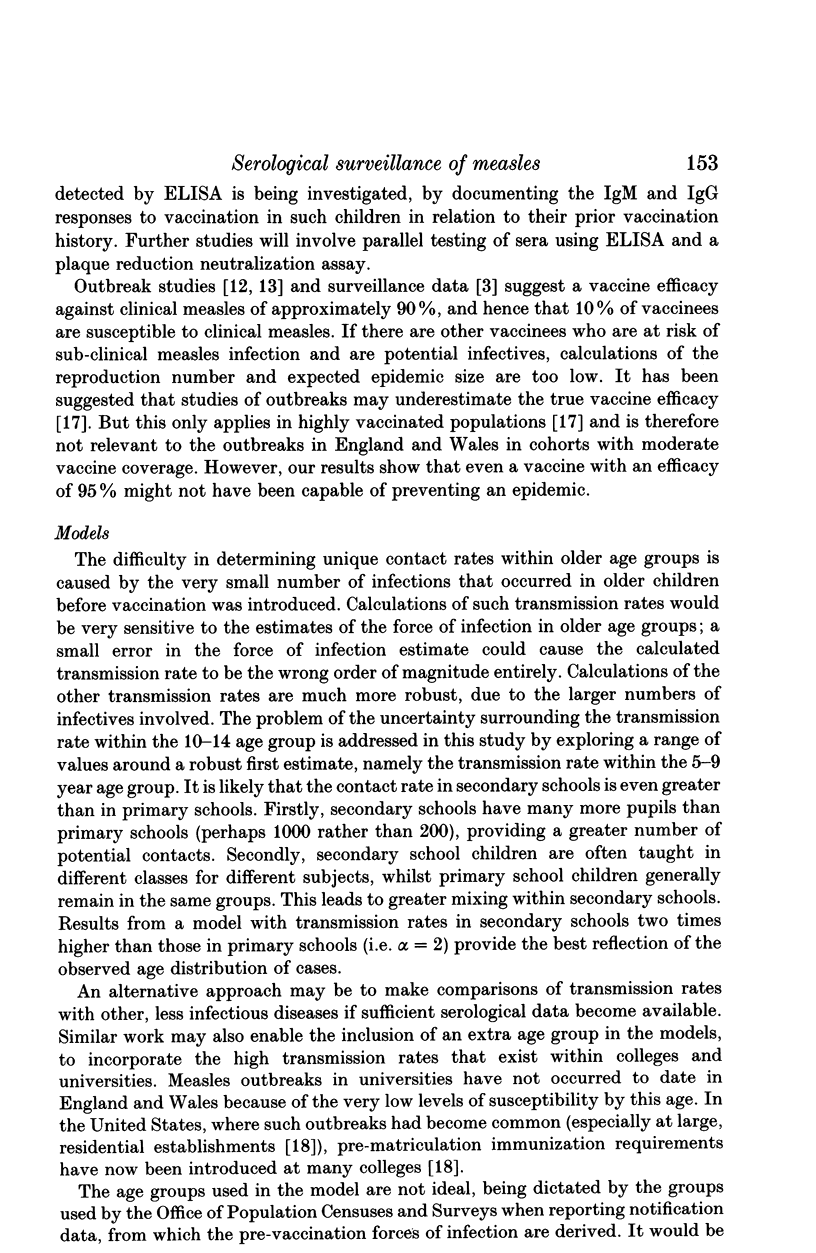
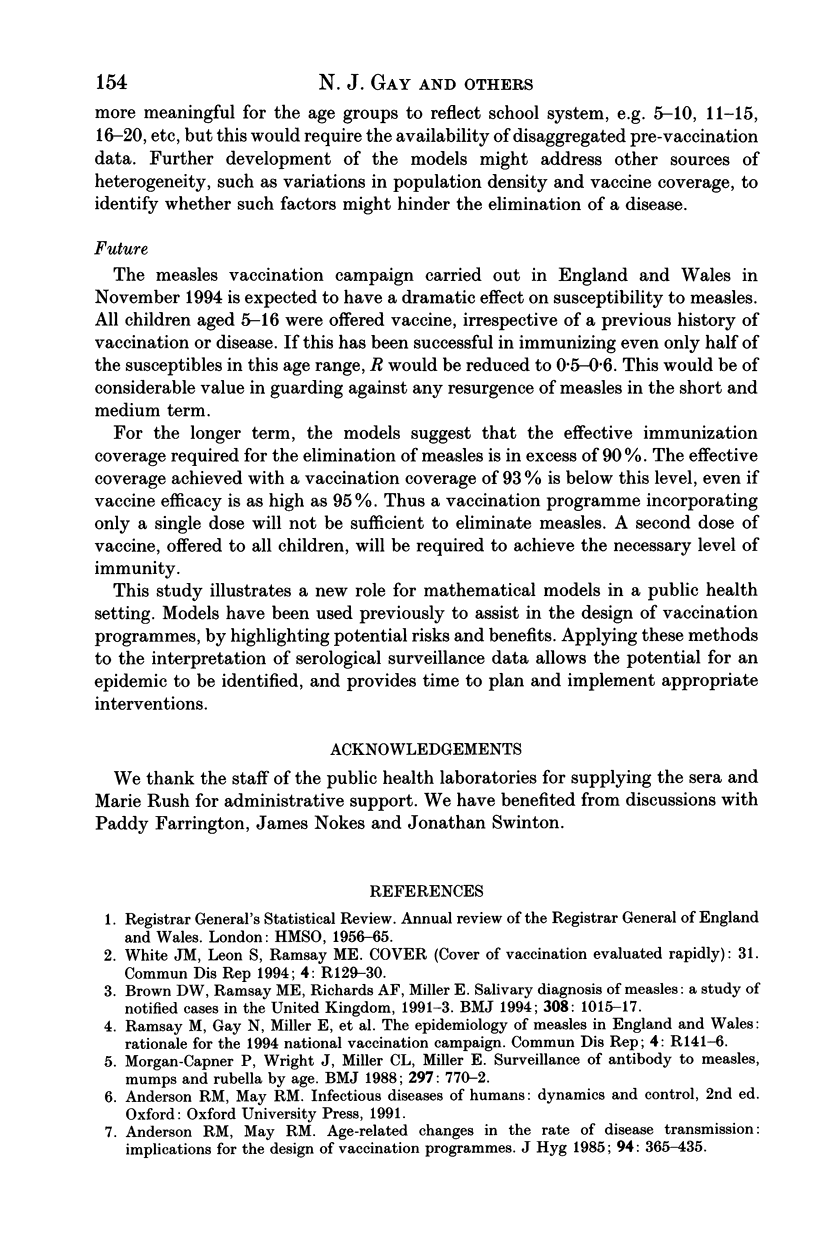
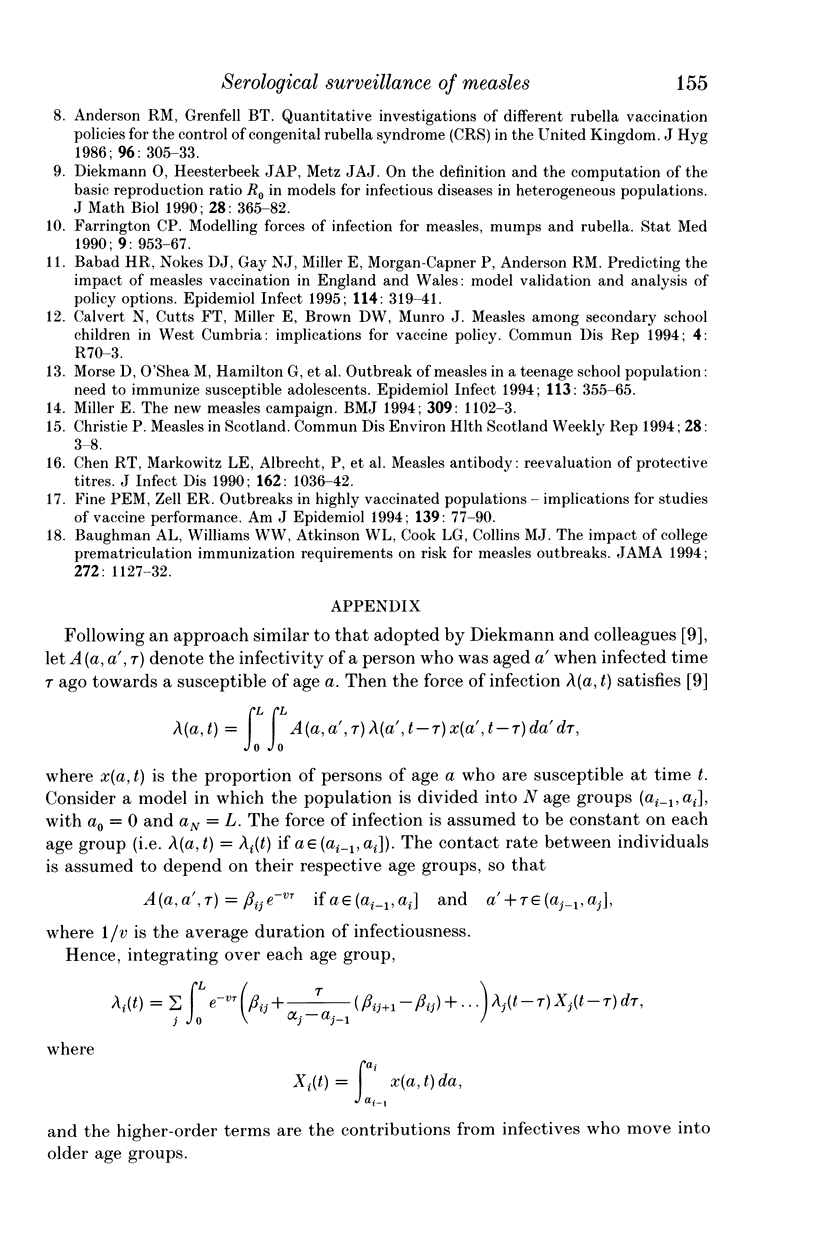
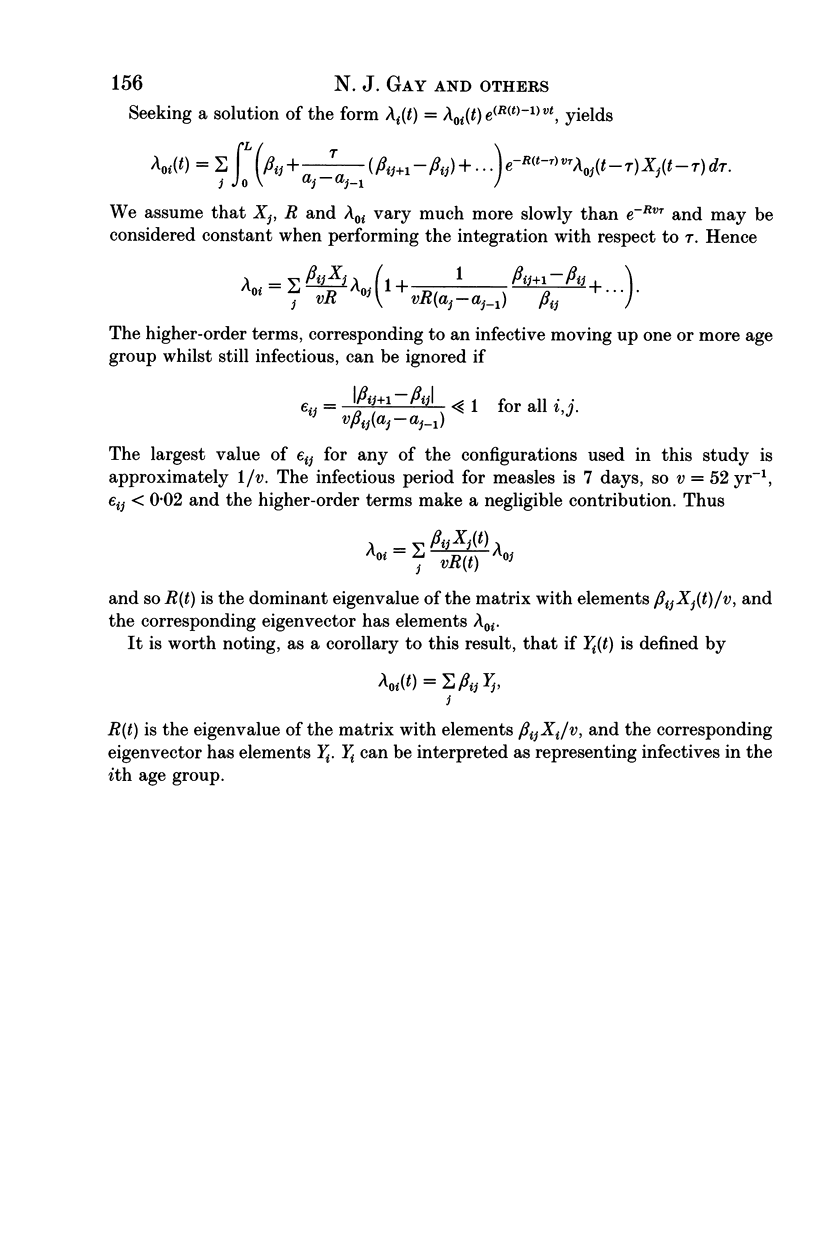
Selected References
These references are in PubMed. This may not be the complete list of references from this article.
- Anderson R. M., Grenfell B. T. Quantitative investigations of different vaccination policies for the control of congenital rubella syndrome (CRS) in the United Kingdom. J Hyg (Lond) 1986 Apr;96(2):305–333. doi: 10.1017/s0022172400066079. [DOI] [PMC free article] [PubMed] [Google Scholar]
- Anderson R. M., May R. M. Age-related changes in the rate of disease transmission: implications for the design of vaccination programmes. J Hyg (Lond) 1985 Jun;94(3):365–436. doi: 10.1017/s002217240006160x. [DOI] [PMC free article] [PubMed] [Google Scholar]
- Babad H. R., Nokes D. J., Gay N. J., Miller E., Morgan-Capner P., Anderson R. M. Predicting the impact of measles vaccination in England and Wales: model validation and analysis of policy options. Epidemiol Infect. 1995 Apr;114(2):319–344. doi: 10.1017/s0950268800057976. [DOI] [PMC free article] [PubMed] [Google Scholar]
- Baughman A. L., Williams W. W., Atkinson W. L., Cook L. G., Collins M. The impact of college prematriculation immunization requirements on risk for measles outbreaks. JAMA. 1994 Oct 12;272(14):1127–1132. [PubMed] [Google Scholar]
- Brown D. W., Ramsay M. E., Richards A. F., Miller E. Salivary diagnosis of measles: a study of notified cases in the United Kingdom, 1991-3. BMJ. 1994 Apr 16;308(6935):1015–1017. doi: 10.1136/bmj.308.6935.1015. [DOI] [PMC free article] [PubMed] [Google Scholar]
- Chen R. T., Markowitz L. E., Albrecht P., Stewart J. A., Mofenson L. M., Preblud S. R., Orenstein W. A. Measles antibody: reevaluation of protective titers. J Infect Dis. 1990 Nov;162(5):1036–1042. doi: 10.1093/infdis/162.5.1036. [DOI] [PubMed] [Google Scholar]
- Diekmann O., Heesterbeek J. A., Metz J. A. On the definition and the computation of the basic reproduction ratio R0 in models for infectious diseases in heterogeneous populations. J Math Biol. 1990;28(4):365–382. doi: 10.1007/BF00178324. [DOI] [PubMed] [Google Scholar]
- Farrington C. P. Modelling forces of infection for measles, mumps and rubella. Stat Med. 1990 Aug;9(8):953–967. doi: 10.1002/sim.4780090811. [DOI] [PubMed] [Google Scholar]
- Fine P. E., Zell E. R. Outbreaks in highly vaccinated populations: implications for studies of vaccine performance. Am J Epidemiol. 1994 Jan 1;139(1):77–90. doi: 10.1093/oxfordjournals.aje.a116937. [DOI] [PubMed] [Google Scholar]
- Miller E. The new measles campaign. BMJ. 1994 Oct 29;309(6962):1102–1103. doi: 10.1136/bmj.309.6962.1102. [DOI] [PMC free article] [PubMed] [Google Scholar]
- Morgan-Capner P., Wright J., Miller C. L., Miller E. Surveillance of antibody to measles, mumps, and rubella by age. BMJ. 1988 Sep 24;297(6651):770–772. doi: 10.1136/bmj.297.6651.770. [DOI] [PMC free article] [PubMed] [Google Scholar]
- Morse D., O'Shea M., Hamilton G., Soltanpoor N., Leece G., Miller E., Brown D. Outbreak of measles in a teenage school population: the need to immunize susceptible adolescents. Epidemiol Infect. 1994 Oct;113(2):355–365. doi: 10.1017/s0950268800051785. [DOI] [PMC free article] [PubMed] [Google Scholar]
- Ramsay M., Gay N., Miller E., Rush M., White J., Morgan-Capner P., Brown D. The epidemiology of measles in England and Wales: rationale for the 1994 national vaccination campaign. Commun Dis Rep CDR Rev. 1994 Nov 11;4(12):R141–R146. [PubMed] [Google Scholar]
- White J. M., Leon S., Ramsay M. E. COVER (COVER of vaccination evaluated rapidly): 31. Commun Dis Rep CDR Rev. 1994 Oct 14;4(11):R129–R130. [PubMed] [Google Scholar]


